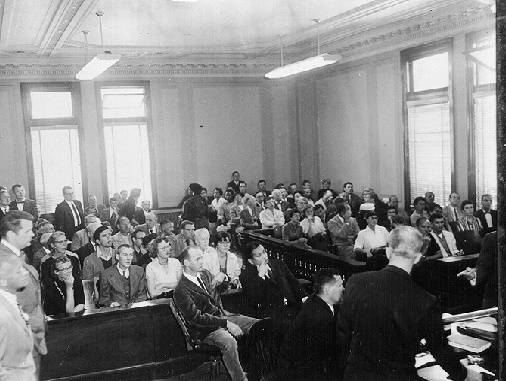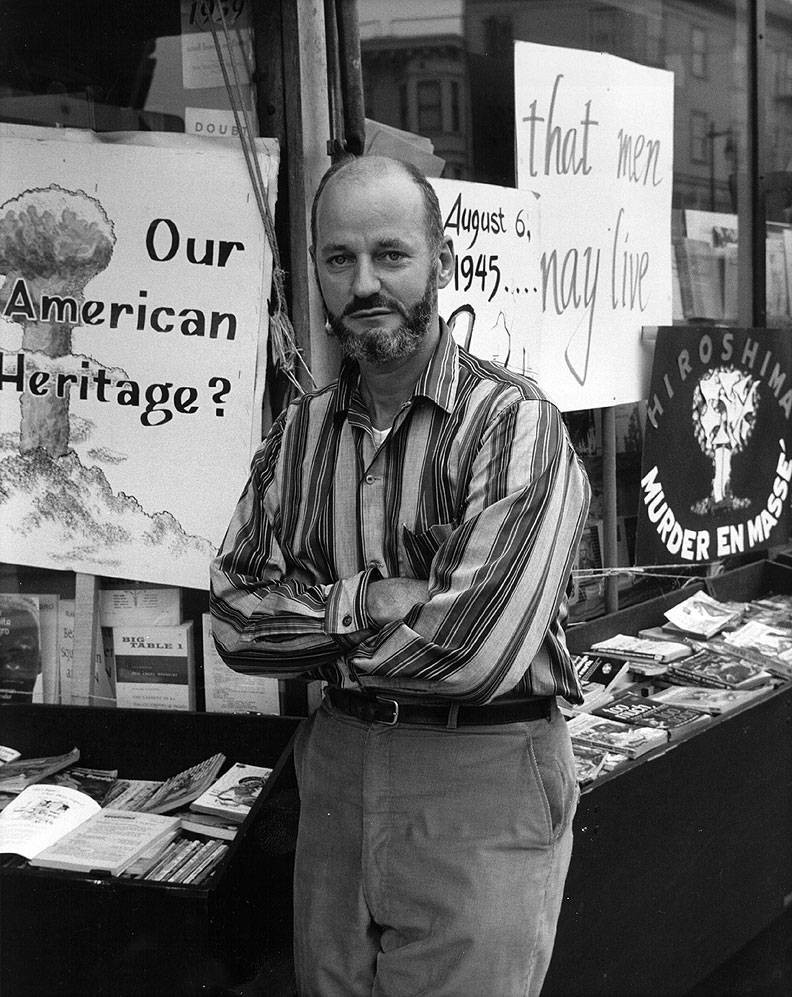The Howl Obscenity Trial
Historical Essay
by James Sederberg
The Howl trial, 1957, Lawrence Ferlinghetti and Shigeyoshi Murao were defendants.
photo: City Lights Archive
Allen Ginsberg's Howl was written in the summer of 1955 in an apartment at 1010 Montgomery Street. His first public reading of Howl was in October, 1955 at the Six Gallery in North Beach. After this eventful performance, publisher and fellow poet Lawrence Ferlinghetti, borrowing from Emerson's message to Whitman a century earlier, wired Ginsberg: "I greet you at the beginning of a great career. Please send manuscript." City Lights published Howl in 1956 and soon the poem, the poet, and the San Francisco Rennaisance, or the Beats, were known throughout the country.
When U.S. Customs released the paperback version of Howl that had been printed in London, Ferlinghetti and his partner, Shigeyosi Murao, were arrested by San Francisco police on obscenity charges. One newspaper headline read: "Cops Don't Allow No Renaissance Here." After a long trial (covered in a Life Magazine picture story) in which poets, critics, and academics testified to the redeeming social value of Howl, it was ruled not obscene and City Lights was exonerated. The decision that was handed down in the Howl obscenity trial led to the American publication of the previously censored Tropic of Cancer by Henry Miller and D.H. Lawrence's Lady Chatterly's Lover. The trials publicity brought the San Francisco Beat Movement into the national spotlight and inspired many would-be poets and seekers to make their way out to the West Coast.
Howl is a poem that embodied the state of America and of the individual as Ginsberg saw it. It is divided into three sections. The first has been described as a sometimes hysterical lament about the political and cultural conservatism that has destroyed the best minds of the poet's generation. The second is a poetic tirade against Moloch, the symbol of human avarice that creates a society of dehumanized, desensitized, mechanized conformists. Ginsberg claims to have seen the image of Moloch in the silhouette of the Sir Francis Drake Hotel at Union Square. (Whether drugs were involved is uncertain.) The third part of the poem is addressed to his friend in a mental institution--a victim of the mad society around him.
In Howl the sacred and the profane are weighed equally. Lines such as "The asshole is holy!" probably had something to do with people taking offense. But they just didn't get it. Ginsberg, in fact, exalts the perceptions of the irrational visionary immersed in an insane world. Howl is a rage against conformity, inhibition, censorship, puritanism, and everything else that restricts and limits the realization of one's true self. It is both a howl of defeat from a living hell and a howl of defiant laughter.
Lawrence Ferlinghetti, in 1959, a couple of years after the Howl trial.
Photo: City Lights Books


